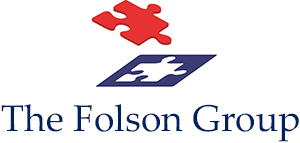Why Every NYC Co-op & Condo Needs a New Board Member Onboarding Process
Because You’d Never Hire an Employee Without One—So Why Do We?
Imagine getting hired for a job at a company—without any training, job description, or handbook. No one tells you who to report to, what your responsibilities are, or where the policies live. You're just expected to “figure it out.”
Unthinkable, right?
And yet, that’s exactly how many NYC co-op and condo boards operate when welcoming new members. It’s no wonder so many new volunteers feel lost, frustrated, or hesitant to speak up. Without a clear onboarding process, both the individual and the building can suffer.
It’s the Board’s Job to Onboard, Not the New Member’s Job to Guess
Serving on a co-op or condo board is like joining the executive team of a small (or not-so-small) company. These volunteers manage large budgets, oversee legal compliance, hire vendors, and drive complex building projects. They’re not just residents—they’re decision-makers with fiduciary responsibilities.
And most of the time? They’re thrown into the role with no guidance.
That’s not just overwhelming—it’s a liability for the entire building. New board members shouldn’t have to guess their way into success. When boards take responsibility for onboarding, they set the tone for professionalism, collaboration, and accountability.
👉 The takeaway: don’t leave new board members to fend for themselves. A little upfront structure prevents a lot of downstream problems. For more on this topic, see our article on Why Is It So Hard to Get Quorum (and New Board Members) in NYC Coops?
If You’re on the Board, You’re the Employer
In corporate settings, the employer owns the onboarding process. It’s their job to give employees what they need to succeed. The same should go for board transitions.
It’s on the current board to ensure that new members are onboarded properly. A structured approach sets clear expectations, speeds up their learning curve, and avoids costly mistakes.
This is Leadership 101: give people the tools to succeed.
Whether your building is 8 units or 800, every board should have a consistent and thoughtful new board member onboarding process—especially in NYC, where regulations, vendor relationships, and project scopes are complex.
👉 Think of it this way: when you onboard well, you’re not just helping one person—you’re protecting the financial and operational health of the entire building.
What a Thoughtful Onboarding Process Should Include
We’ve worked with hundreds of boards, and the most effective ones onboard like pros. That means providing:
✅ A welcome letter or email from the board
✅ A “job” description outlining board roles and fiduciary responsibilities
✅ A summary of current building projects, contracts, and capital plans
✅ Access to governing documents (bylaws, house rules, financial reports)
✅ Meeting minutes from the past 12 months
✅ Names and firms of the managing agent, attorney, accountant, engineer
✅ A roadmap for how decisions are made and communicated
✅ Links to outside education, with our favorite being our book Living the High Life: How Smart Co-op and Condo Owners Protect Themselves and Their Investment
Sound familiar? It mirrors a corporate onboarding program—with context, tools, and clarity built in. For more on this, check out our blogs: Mastering Your Role as a Newly Elected Coop Board Member and our Annual Meeting Planning for Coops and Condos.
👉 When boards commit to this level of organization, they send a powerful message: “We take this role seriously, and we’ll set you up to succeed.”
Why This Matters—for the Entire Building
When new board members are brought in the right way, everyone benefits:
🧘♀️ Less confusion and conflict
📈 Faster, better-informed decisions
📉 Fewer costly mistakes
🤝 Stronger team collaboration
🧠 More confidence and less burnout—for new and existing members
And best of all—shorter, more productive meetings.
In other words, a good onboarding process doesn’t just help the new person—it elevates the entire board and strengthens the building’s governance. That’s the kind of culture shift that pays dividends for years.
Don’t Start from Scratch—We’ve Built It for You
Creating an onboarding process doesn’t need to be overwhelming. We put together a complete New Board Member Onboarding Toolkit to make it easy.
It includes:
📋 A step-by-step onboarding checklist
🗂️ A welcome email template
📚 A curated list of board education resources
🧭 Tips for orienting new members in their first 90 days
🎯 Bonus: Links to Living the High Life, Habitat articles, CNYC, and our newsletter archive
This toolkit is designed to save boards time, reduce stress, and make sure every new member is positioned to contribute effectively from day one.
📥 Download Your Free Toolkit Today
Set up your newest board member (and your whole building) for success—starting today.

